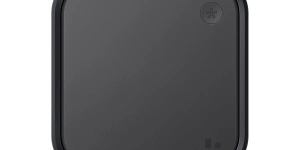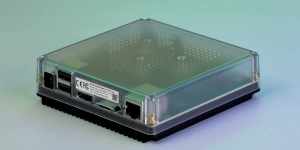The Matter standard has successfully unified basic smart home controls like lights and plugs. However, the world of video security and monitoring has largely remained complex and fragmented. With the latest Matter 1.5 specification update, Matter is expanding to include a comprehensive framework for cameras, video doorbells, and intercoms, promising to simplify security setup and ensure true compatibility across all brands.
This pivotal addition ensures that monitoring devices will finally share a universal control language, integrating seamlessly with existing Matter smart home devices such as sensors and lighting. The technical requirements for this new category are detailed within the Matter application clusters.
Here is a technical summary of the Matter Camera based on information we have gathered so far.
Defining the new camera device family
To ensure a consistent and reliable user experience, Matter does not just have one "camera" type. Instead, it structures video devices into several specialized types based on their primary function. This ensures that every certified product performs a standardized set of actions. The new specification adds support for the "Camera", "Snapshot Camera", "Intercom", "Video Doorbell", and more.
The foundational device providing multimedia capabilities is the "Camera". This is the standard monitoring device, and it is required to handle live streaming of Video and Audio and deliver "Snapshots" on demand.
For devices focused strictly on still images, such as a low-power, battery-operated camera, the "Snapshot Camera" type is designed only to support retrieving "still pictures on-demand". A key feature is that this device type must utilize the Zone Management cluster, allowing users to define detection regions using the "Two Dimensional Cartesian Zone" feature. It is specifically built to exclude the requirement for continuous Video and Audio streams, saving power.
For two-way communication systems, the "Intercom" is a device type specialized for conversation. It requires Audio support and, while it may optionally support Video, it explicitly excludes the Snapshot feature. This device type, when implemented, must use the WebRTC transport clusters for sending and receiving its streams.
Entryway security is handled by composite devices that bundle multiple functions. The "Video Doorbell" is defined as a device that must be composed of a primary "Camera" and a "Doorbell" device. A simpler "Audio Doorbell" requires Audio streaming support and the ability to operate a "Chime Client", but it excludes both Video and Snapshot features. Similarly, the "Floodlight Camera" is a composite outdoor security unit, integrating a "Camera" with at least one "On/Off Light" component. The spec also defines these complementary devices, including the "Chime", which plays pre-installed sounds, the "Doorbell" (defined as a specialized switch), and a "Camera Controller", which provides interfaces for managing camera devices.
Technical capabilities and secure media management
Beyond just defining device types, Matter also standardizes the technical "how-to" of camera operation. The spec defines rigorous requirements for managing video quality, user controls, and secure data transfer, primarily through the "Camera AV clusters".
For instance, the "Camera AV Stream Management cluster" manages all media activity. It allocates resources for different stream usages, such as "LiveView" (for real-time watching), "Recording" (for clip archival), or "Analysis" (for internal detection features). The camera must use a list of stream usage priorities to resolve conflicts, ensuring the highest priority stream gets the best available resolution and bitrate. A controller can also request an instant image using the "CaptureSnapshot" command.
User-level controls like Pan, Tilt, and Zoom (PTZ) are standardized in the "Camera AV Settings User Level Management cluster". This covers physical movement (reporting its state as "Idle" or "Moving") and Digital PTZ, which adjusts the viewport within a stream. Users can also set specific saved locations called "Mechanical Presets". The system even supports applying a "Watermark" or displaying information via an "On Screen Display" (OSD) on the video feed.
Privacy features are also explicitly defined. A camera can be commanded to stop specific stream types via the "SoftLivestreamPrivacyModeEnabled" or "SoftRecordingPrivacyModeEnabled" attributes. Any attempt to initiate a stream will fail if the camera is currently in "Hard Privacy Mode On", such as when a physical lens cover is closed.
To ensure security, Matter mandates two distinct and highly secured transport methods for video.
First, Real-Time Streaming via WebRTC is used for quick, low-delay viewing. This connection is protected using the Secure Frame (SFrame) protocol to provide end-to-end encryption of the media frames. For battery-powered devices in standby mode, a "SolicitOffer" command is used, which hints to the controller that the camera may take "less than 30 seconds" to wake up and start the stream.
Second, Recorded Clip Uploads via Push Transport utilize the "Push AV Stream Transport Cluster" for event-triggered recordings. These recordings must adhere to the CMAF (Common Media Application Format) Ingestion protocol. For network security, all URLs used for clip uploads "SHALL use the secure ‘https’ scheme".
Availability and certification status
As the specifications are released, the initial batch of vendors and ecosystems that actively participate in testing and contribute should be the first to receive official certification and release. Additionally, an upcoming "Plugfest" event organized by CSA will also focus on camera interoperability testing, with volunteer participants from its members, as multiple anonymous sources told Matter Alpha.
On the ecosystem front, Home Assistant and SmartThings are poised to be the first platforms to support Matter cameras. However, Home Assistant is currently in the process of migrating its core Matter integration to a Matter.js backend. This technical shift may delay its adoption of the latest 1.5 specification. A Home Assistant representative told Matter Alpha that while the Matter Camera device type is on their roadmap, they first need to integrate prerequisite features, such as two-way audio for smart doorbells, before they can officially implement support.
For hardware vendors, the race is on. A TP-Link product manager previously told Matter Alpha that the Tapo C260 and C560WS would be the first models to add Matter support via firmware updates, with plans to launch more models in the future.
Another major player, Aqara, which has heavily expanded its camera lineup in recent years, is planning to release its first native Matter camera in the first half of 2026.

Meanwhile, XThings Group (U-tec, Ulticam, and Ultraloq holder) aims to be one of the first to market. Raj Sundar, XThings Product Management Leader, stated in an interview with Matter Alpha that the company hopes to release the Ulticam IQ V2 as soon as late November. This new model reportedly features richer AI capabilities and consumes 50% less power than its predecessor.
In adition to native Matter cameras, what about the millions of high-quality IP cameras people already own? This is where a Matter Bridge may come in. A Matter Bridge would be a workaround to bring existing IP cameras to Matter via a "delicate" hub or NVR.
This bridge (which the spec calls an "Aggregator") manages the connection to the proprietary camera system. Its job is to act as a real-time translator. Each non-Matter camera being incorporated is then represented logically within the Matter network by an endpoint implementing the "Bridged Node" device type – which is Matter’s way of making the old camera appear as if it were a native Matter device. The function of this bridge is to translate the native control protocol of the legacy camera into standard Matter language, encompassing attribute readings, commands, and events, so that any Matter platform can understand and control it.
Note: The article was updated with Xthings interview content.
(Source: CSA, GitHub, Home Assistant, XThings Group; Image Source: XThings Group)



